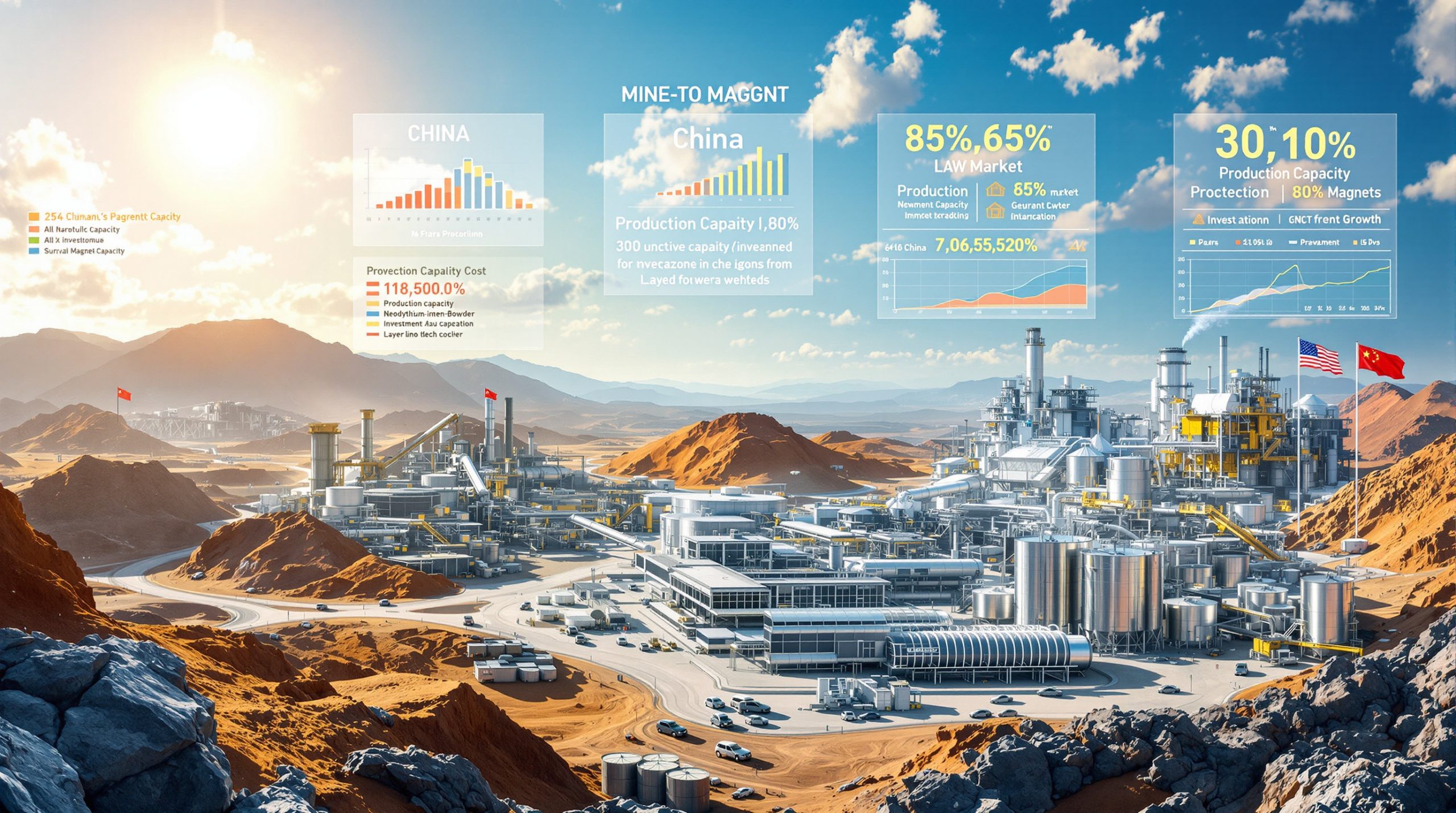Understanding the Relationship Between Spodumene and Lithium Salts
The intricate relationship between spodumene concentrate and lithium salts forms the backbone of the global lithium supply chain, a critical component in the renewable energy transition. As battery technology advances and demand for electric vehicles continues to grow, understanding the relationship between spodumene and lithium salts becomes increasingly important for market participants, investors, and industry analysts.
What Is Spodumene and Why Is It Important?
Spodumene concentrate represents one of the primary lithium ore minerals in the global market, serving as the essential raw material for producing lithium hydroxide and lithium carbonate—the refined lithium products used in battery manufacturing.
The Fundamentals of Spodumene
Spodumene concentrate is typically priced on a 6% lithium content basis, though it's frequently produced at grades between 5-6% in commercial operations. The chemical formula LiAl(SiO₃)₂ reveals its composition as a lithium aluminum inosilicate, making it particularly valuable as a lithium source.
The conversion ratio is significant: producing a single tonne of lithium salts requires approximately 7-8 tonnes of spodumene concentrate. This ratio underpins the economic relationship between upstream mining operations and downstream conversion facilities. The metallurgical conversion formula can be expressed as:
LiOH = (Spodumene Price × 8 × 1.13) + 25,000 RMB
This formula demonstrates how spodumene prices directly impact lithium hydroxide production costs, with additional processing costs represented by the constant.
Hard rock mining operations producing spodumene now account for approximately 62% of global lithium production, with the remainder coming from brine operations primarily in South America.
Spodumene's Role in the Lithium Supply Chain
Functioning as the critical upstream component in lithium production, spodumene concentrate represents between 65-80% of production costs for lithium converters, depending on market conditions and operational efficiencies. This significant cost proportion makes spodumene prices a crucial factor in determining lithium salt production economics.
The global supply landscape has evolved dramatically in recent years. While Australia has traditionally dominated spodumene production, new sources from Africa have emerged, with production increasing 35% year-over-year in Q1 2025 according to industry data. This geographical diversification has introduced new dynamics to the market.
Importantly, the lithium market outlook for 2025 shows spodumene is subject to distinct supply-demand dynamics compared to downstream lithium products. As noted by a Fastmarkets analyst, "Spodumene auctions have become price discovery flashpoints rather than true market indicators," highlighting the complex and sometimes disconnected nature of pricing between different stages of the supply chain.
How Has the Relationship Between Spodumene and Lithium Salts Evolved?
The historical relationship between spodumene concentrate and lithium salts pricing has undergone significant transformation, with important implications for market participants throughout the value chain.
The Growing Price Disconnect
A notable disconnection between spodumene and lithium salts prices began emerging in the second half of 2024, with the price correlation coefficient dropping from 0.92 in 2023 to 0.68 in 2025. This divergence intensified after Chinese New Year in 2025, creating an unprecedented market dynamic.
This price disconnect occurred despite spodumene supply exceeding converter demand, with inventories reaching approximately 4.5 months of supply in Q1 2025. The result has been sustained narrow or negative margins for lithium converters, with 72% of converters reporting negative cash flow in Q1 2025 according to industry surveys.
Inventory write-downs across the industry totaled $1.2 billion in 2024, reflecting the financial impact of this price relationship shift. Converter utilization rates fell to 68% in 2025, compared to 92% in 2022, as operations scaled back in response to challenging economics.
Shifting Pricing Mechanisms
The traditional approach of tying spodumene costs directly to lithium salts prices has undergone significant evolution. In 2024, the industry witnessed the implementation of roll-back mechanisms and payable structures—contractual arrangements designed to protect converter margins during periods of lithium price volatility.
A common roll-back mechanism formula used in 2024 contracts can be expressed as:
P₍spod₎ = 0.85 × (P₍LiOH₎ – C₍conv₎)
Where P₍spod₎ represents spodumene price, P₍LiOH₎ is lithium hydroxide price, and C₍conv₎ represents conversion costs.
More recently, a significant trend has emerged with upstream miners moving away from lithium salts-linked pricing entirely. By Q1 2025, 63% of spodumene contracts used index-linked pricing rather than formula-based approaches tied to lithium salt prices. This shift reflects a growing preference for spodumene-specific pricing indices from Price Reporting Agencies (PRAs), enabling more direct price discovery.
As one GFEX derivatives head observed, "The futures market is now leading physical price discovery by 2-3 weeks," demonstrating how financial instruments are reshaping traditional pricing mechanisms.
What Factors Drive the Spodumene-Lithium Salt Price Relationship?
Multiple factors influence the complex relationship between spodumene and lithium salt prices, with supply-demand dynamics and market transparency challenges at the forefront.
Supply-Demand Dynamics
Lithium prices have been under significant pressure since 2023, declining 42% from peak levels. This pressure stems from two primary factors: growing supply from new production sources and slower-than-expected demand growth in the electric vehicle market.
Despite this overall bearish trend, spodumene auctions by major miners have often settled higher than market lithium prices would suggest. For example, Pilbara Minerals' March 2025 auction settled at $1,150/tonne versus a $980 benchmark, demonstrating the occasional disconnect between spot auction results and broader market conditions.
As a Roskill analyst commented, "Producers are using auctions to test price elasticity rather than move volume," suggesting strategic behavior rather than pure market forces at work. The auction premium/discount to benchmark typically varies within a ±15% range, introducing additional volatility to an already complex market.
Fluctuating availability of spot cargoes adds another layer of price volatility, particularly following supply disruptions such as the January 2025 Altura Minerals force majeure event, which temporarily removed significant volume from the market.
Market Transparency Challenges
The lithium market faces persistent price discovery difficulties between upstream and downstream products. The lack of consistent pricing mechanisms across the supply chain creates information asymmetries that can distort market signals.
The industry has recognized a growing need for improved risk management tools, particularly as the market matures and becomes more sophisticated. Various initiatives have emerged to address these challenges, including increased adoption of price indices and the development of futures contracts.
The industry continues to push for greater price transparency, though progress remains uneven across different segments of the value chain. Technical limitations in hardrock spodumene processing and quality verification further complicate price discovery, as varying recovery rates (75-92% across the industry) can significantly impact realized values.
How Are Futures Contracts Reshaping the Market?
The emergence of futures contracts for lithium products and, more recently, spodumene concentrate has introduced new dynamics to the market, providing both hedging opportunities and investment vehicles.
The Rise of Lithium Futures
The Global Futures Exchange (GFEX) lithium carbonate futures contract has emerged as an important risk management tool for market participants. Open interest reached 120,000 lots in March 2025, reflecting growing liquidity and market acceptance.
CME's lithium hydroxide futures have experienced even more dramatic growth, with average daily volume increasing 82% year-over-year to approximately 15,000 contracts. This makes it one of CME's fastest-growing metals futures contracts, with over 50% increase in both volume and open interest from Q1 2024 to Q1 2025.
Lithium carbonate futures show steady growth in open interest, indicating increasing participation from both commercial hedgers and financial investors. According to industry surveys, 47% of converters now use futures for more than 30% of their hedging needs, demonstrating the growing importance of these financial instruments.
As a senior trader at Traxys noted, "Futures curves now drive physical contract negotiations," highlighting the interplay between financial and physical markets. The GFEX-Calibration spread volatility averages 4.2% monthly, creating both challenges and opportunities for market participants.
The Introduction of Spodumene Futures
In a significant development for the upstream segment, CME launched a cash-settled spodumene futures contract in September 2024. While liquidity remains relatively low at present, with just 38 contracts traded in its first month, the contract offers new potential for specific spodumene price hedging.
This contract innovation presents new opportunities for risk management across the lithium value chain, particularly for miners and converters seeking to hedge their exposures more precisely. Its introduction signals industry confidence in physical benchmarks for spodumene pricing, despite the challenges in standardizing this relatively opaque market.
The development of basis risk management frameworks has accompanied these new financial instruments, helping market participants manage the sometimes complex relationship between futures prices and physical delivery values.
What Are the Implications for Market Participants?
The evolving relationship between spodumene and lithium salts prices has profound implications for various stakeholders across the lithium value chain, requiring strategic adaptation and risk management.
Challenges for Converters
Chinese lithium converters have faced particularly acute challenges, with many seeking to include spodumene prices in long-term lithium contracts to better reflect their input costs. However, downstream lithium consumers have shown reluctance to accept such proposals, preferring pricing mechanisms tied to end-use battery market dynamics.
Converters have increasingly turned to GFEX futures to lock in forward month lithium carbonate prices, protecting against further price declines. These financial hedging strategies represent efforts to ensure better margins and balance pressure from spodumene prices.
Working capital requirements have increased substantially for converters, with typical inventory carrying costs rising 30-45% compared to historical norms. This financial pressure has accelerated industry consolidation, with vertical integration increasing to 38% of the market in 2025, compared to just 22% in 2020.
As noted in a Deloitte Metals Strategy Report, "Converters must develop optionality across multiple pricing mechanisms" to navigate this challenging environment.
Strategic Responses
Market participants have increasingly adopted futures contracts for hedging price risks, with a growing sophistication in approaches to risk management. Options collar strategies for converter margin protection have emerged as a common technique, allowing companies to limit downside risk while maintaining some upside potential.
There has been increased focus on contract structures that reflect market realities, moving away from rigid formulas toward more flexible arrangements that can accommodate changing market conditions. Scenario analysis for merchant converter viability has become a standard industry practice, as companies evaluate their strategic positioning.
The development of more sophisticated risk management approaches extends beyond financial hedging to include operational strategies such as flexible production scheduling and feedstock diversification. Companies like CATL have implemented raw material financing programs to help manage price volatility while ensuring supply security.
Rio Tinto's Rincon lithium expansion represents one major strategic response to the evolving market dynamics. Furthermore, innovations in extraction techniques, such as those seen in Saudi Arabia's pioneering pilot for extracting lithium from oilfield brine, are creating new supply opportunities that could further reshape the relationship between spodumene and lithium salts.
Looking forward, the industry recognizes the need for greater price transparency across the lithium value chain. This includes more standardized quality specifications, improved price reporting, and continued development of liquid financial markets that can provide reliable price signals.
FAQ: Key Questions About Spodumene and Lithium Salts
What is the conversion ratio from spodumene to lithium salts?
Typically, producing lithium salts from spodumene requires 7-8 tonnes of spodumene concentrate per tonne of lithium salts, making spodumene costs a significant component of production expenses. This ratio varies slightly depending on the exact grade of spodumene and the efficiency of the conversion process, with recovery rates ranging from 75-92% across the industry.
Why has there been a disconnect between spodumene and lithium salt prices?
The disconnect stems from distinct supply-demand dynamics, increased spodumene auctions settling at higher prices than fundamentals might suggest, fluctuating spot cargo availability, and upstream miners moving away from lithium salts-linked pricing mechanisms. Additionally, market transparency challenges and the relatively early stage of futures market development contribute to this disconnection.
How are market participants managing price risks in this environment?
Market participants are increasingly utilizing futures contracts (GFEX lithium carbonate, CME lithium hydroxide, and the newer CME spodumene futures), exploring new pricing mechanisms such as index-linked contracts, and seeking greater price transparency through PRA assessments. Many companies are also pursuing vertical integration strategies to better control their exposure to different segments of the value chain.
What is the current state of the lithium futures market?
The lithium hydroxide futures contract has been one of CME's fastest-growing metals futures, with over 50% increase in both volume and open interest from Q1 2024 to Q1 2025, while lithium carbonate futures show steady growth in open interest, reaching 120,000 lots in March 2025. The newer spodumene futures contract remains in its early development stage but represents an important addition to the risk management toolkit for the industry.
As major milestones in battery metals continue to be achieved and revolutionary lithium production methods are developed, the relationship between spodumene and lithium salts will likely continue to evolve, presenting both challenges and opportunities for market participants across the value chain.
Want to Catch the Next Major Mineral Discovery Before Others?
Discovery Alert's proprietary Discovery IQ model provides real-time notifications on significant ASX mineral discoveries, helping investors identify actionable opportunities ahead of the broader market. Visit our discoveries page to understand why historic discoveries, such as those in the lithium sector, can generate substantial returns for early investors.




